Disclosure: We may get commissions for purchases made through links in this post.
A driveway is an important aspect of your home's overall design. It should be functional and long-lasting, as well as complement the look of your home and lawn. And if you're planning to have one, you may ask, should the lawn be higher than the driveway? To answer your question, we researched this topic thoroughly. Here is what we found:
The top of the grass on your lawn should be higher than the driveway. The grass should be around 2.5 inches long to allow you to mow the lawn without the mower blades striking the driveway edge. However, the soil should be 0.5 to 1.5 inches below the driveway.
Stay with us as we delve into why should the lawn be higher than the driveway. We'll also talk about how to set your lawn, different types of edging and their advantages and disadvantages, how to install lawn edging, and more. Read on to get the full story!
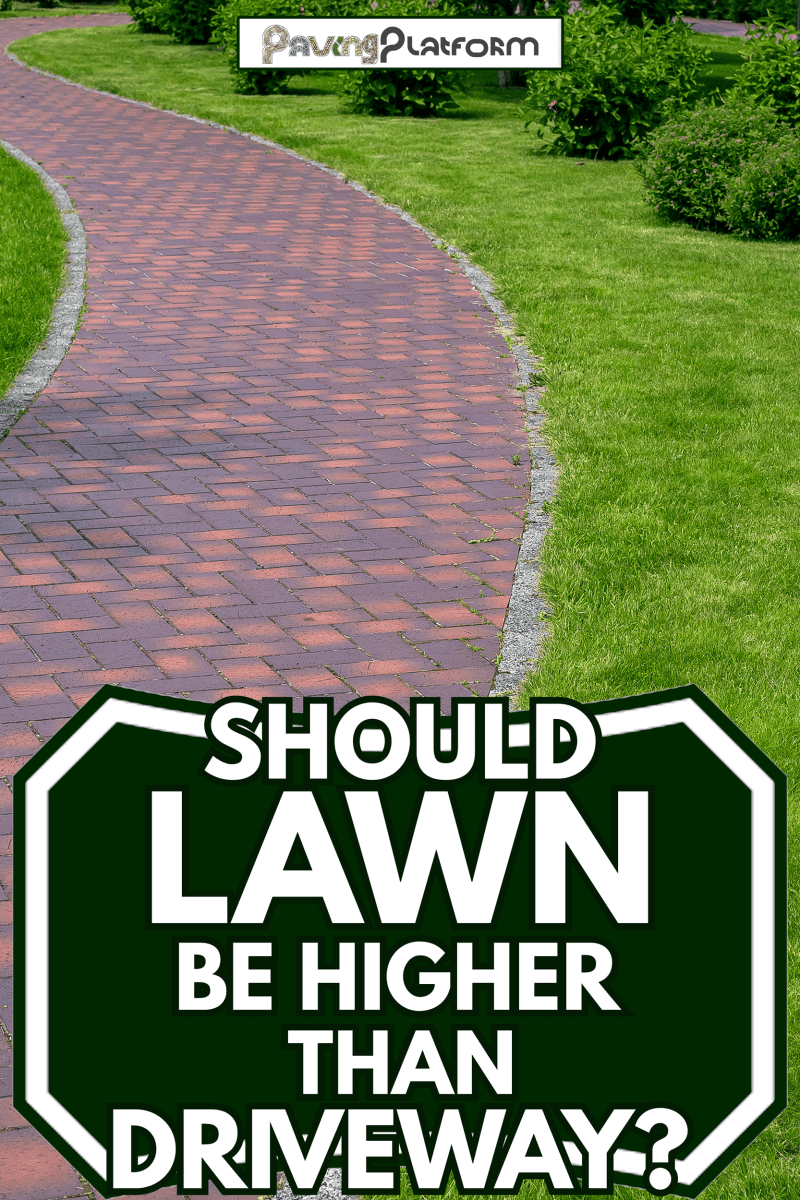
Why Should The Lawn Be Higher Than The Driveway?
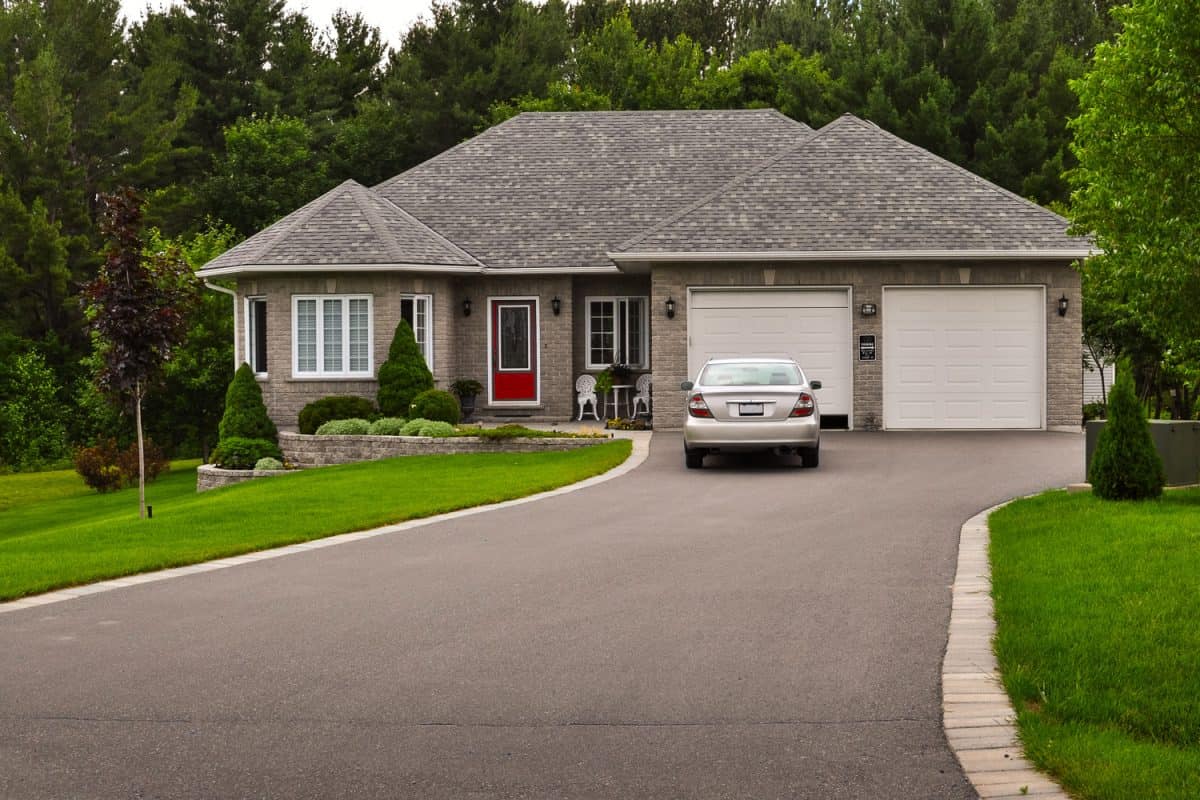
Growing the lawn too low near the pavement can cause trouble. You can run into these problems:
- Flooding can occur when the lawn is too close to or flush with the driveway
- You run the chance of hitting the driveway with the mower blades every time you cut the grass
- If you hit the pavement with your lawnmower, you may generate sparks and dull edges as the blades scrape the driveway
On the other side, if the lawn is too high, these problems might occur:
- The soil may fall along the edges, making your driveway muddy at all times
- It can also encourage weeds to grow in the gaps of the driveway
How To Maintain A Driveway Next To A Lawn?
Here are some tips that might help you in maintaining your driveway and lawn at the same time:
- Install lawn edging in between your driveway and lawn
- Ensure that your sprinklers are touching the lawn's edges
- You can excavate a 4-inch trench between the lawn and driveway
What Is A Lawn Edging?
The grass beside driveways frequently becomes brown as a result of tires running over it, automobile fumes soaking into the soil, or spills from the driveway making their way into the grass. You can protect your lawn with edging, which will absorb the brunt of the impact.
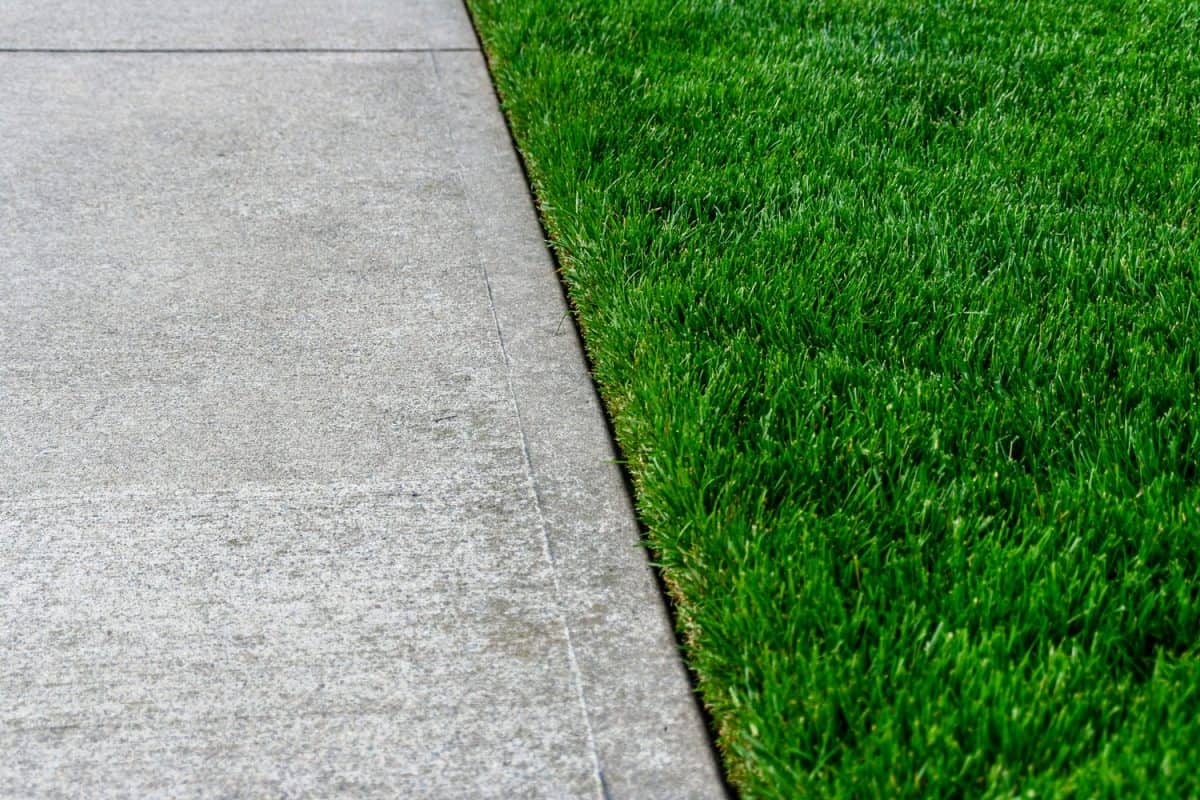
What Are The Benefits Of Using Lawn Edging?
Edging can refer to the process of cutting the grass near the pavement, but it can also refer to physical barriers between your lawn and a paved area. To understand these types of lawn edging better, here are some benefits of using lawn edging in your driveway:
- Make lines cleaner and more appealing to the eye
- Assist in reducing weed infestations
- Reduces the amount of time spent pruning
- Aids in the prevention of mulch and bark chip dispersion into grassed areas
What Are The Types Of Lawn Edging?
There are several types of lawn edging including:
- Metal Lawn Edging
- Plastic Lawn Edging
- Wood Lawn Edging
- Stone/Brick Lawn Edging
Metal Lawn Edging
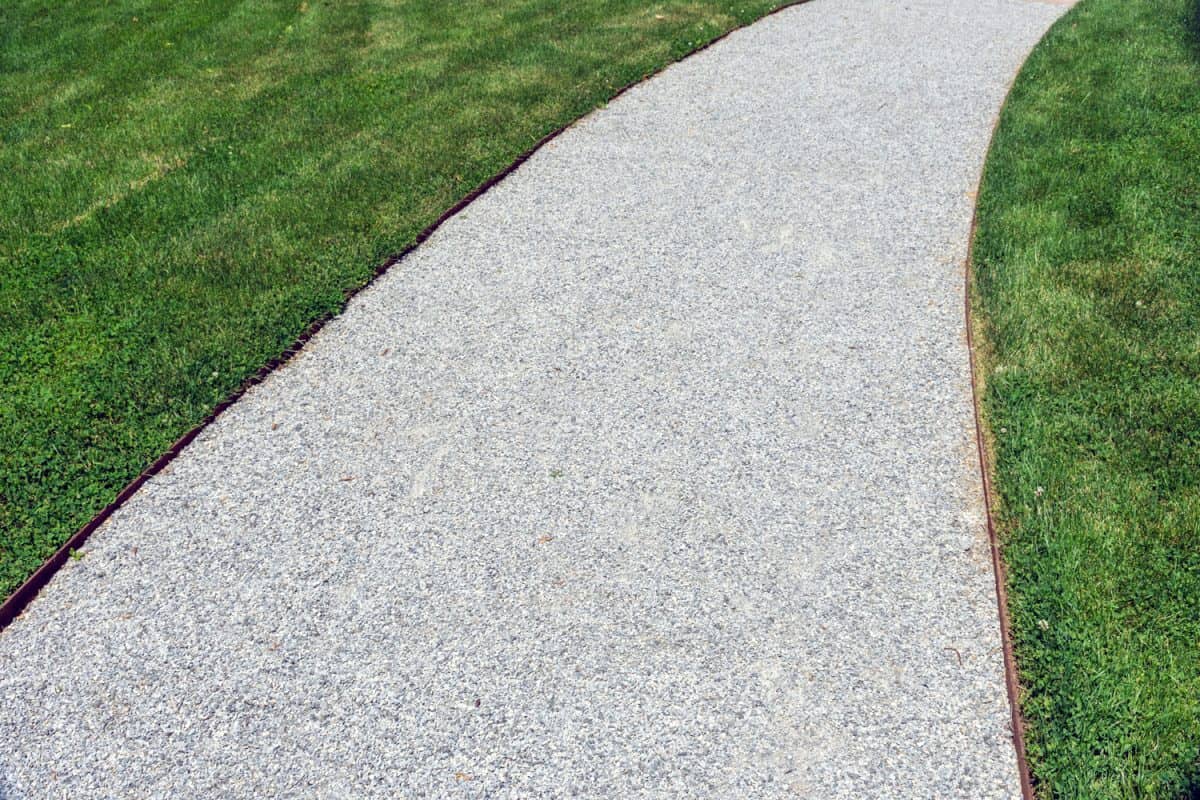
For straight-line sections, aluminum or steel edging is ideal because it won't corrode, decay, or become brittle. Stakes are used to secure the edging, and it can be shaped into many shapes and curves.
This type of lawn edging is available in a range of hues, including black, brown, bronze, and green. They are also ideal for flower beds, tree rings, walkways and paths, brick or stone patios, garden drip margins, and other applications.
Click here for this product on Amazon
Plastic Lawn Edging
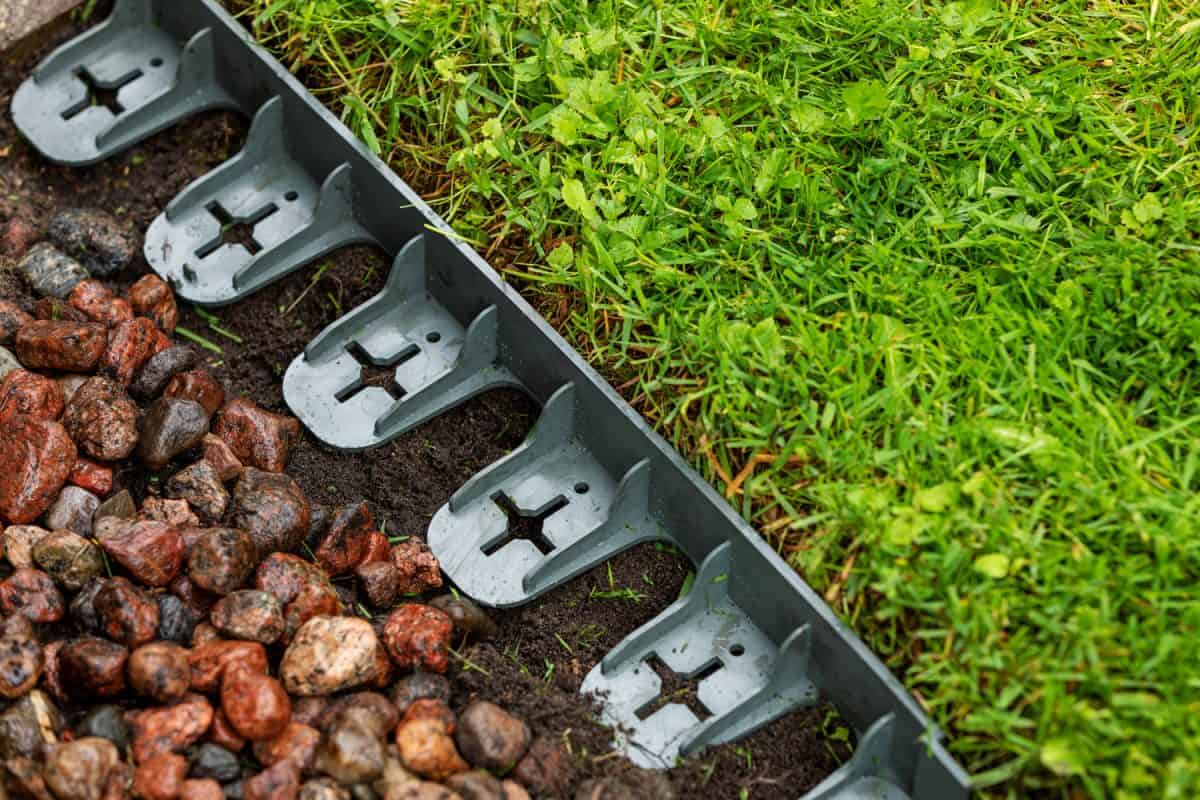
Plastic and vinyl lawn edging are popular and come in a variety of forms. This type of edging adds formality and a sharp, clean look, but it is prone to cracking over time, especially in cold areas.
Try a post-consumer plastic product like a 100-percent recycled brown lawn edging coil for an eco-friendly edging that has a rough, wood-grained look that blends in with mulch, rocks, or dirt. This style of edging uses plastic stakes and blocks to create a long-lasting barrier that keeps grass from spreading.
Click here for this product on Amazon
Wood Lawn Edging
Many homeowners prefer to border their lawns with landscaping timbers or railroad ties. But there are several disadvantages to using this method of lawn edging.
Treated wood, for example, has the potential to harm both plants and beneficial insects. Untreated wood deteriorates over time and must be replaced, yet it is better for the environment and enriches the soil. Wood edging is more difficult to conform to curves, but it will provide a more natural look in the end, especially in wooded areas.
Click here for this product on Amazon
Stone/Brick Lawn Edging
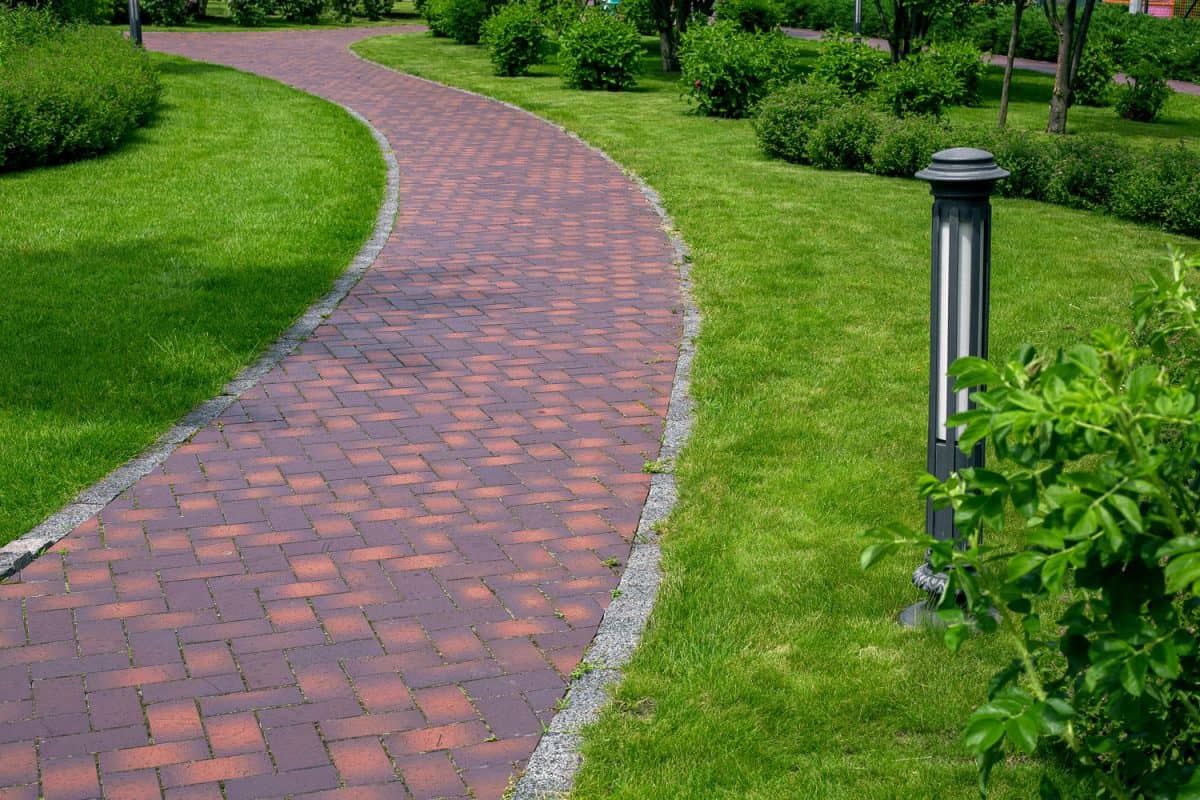
Another type of lawn edging is stone or brick lawn edging. They come in a variety of shapes and sizes and are useful for creating unique patterns, particularly when edging walkways. Brick and concrete are also incredibly durable and work well in a variety of locations, offering more permanent edging. In general, curved landscapes benefit from brick edging, whereas straight lawns benefit from concrete.
What Are The Tools Used For Lawn Edging?
To conveniently install your lawn edgings, you must need a lawn edger. Lawn edgers can be categorized into two:
- Power-operated lawn edgers
- Manually-operated lawn edgers
Power-Operated Lawn Edgers
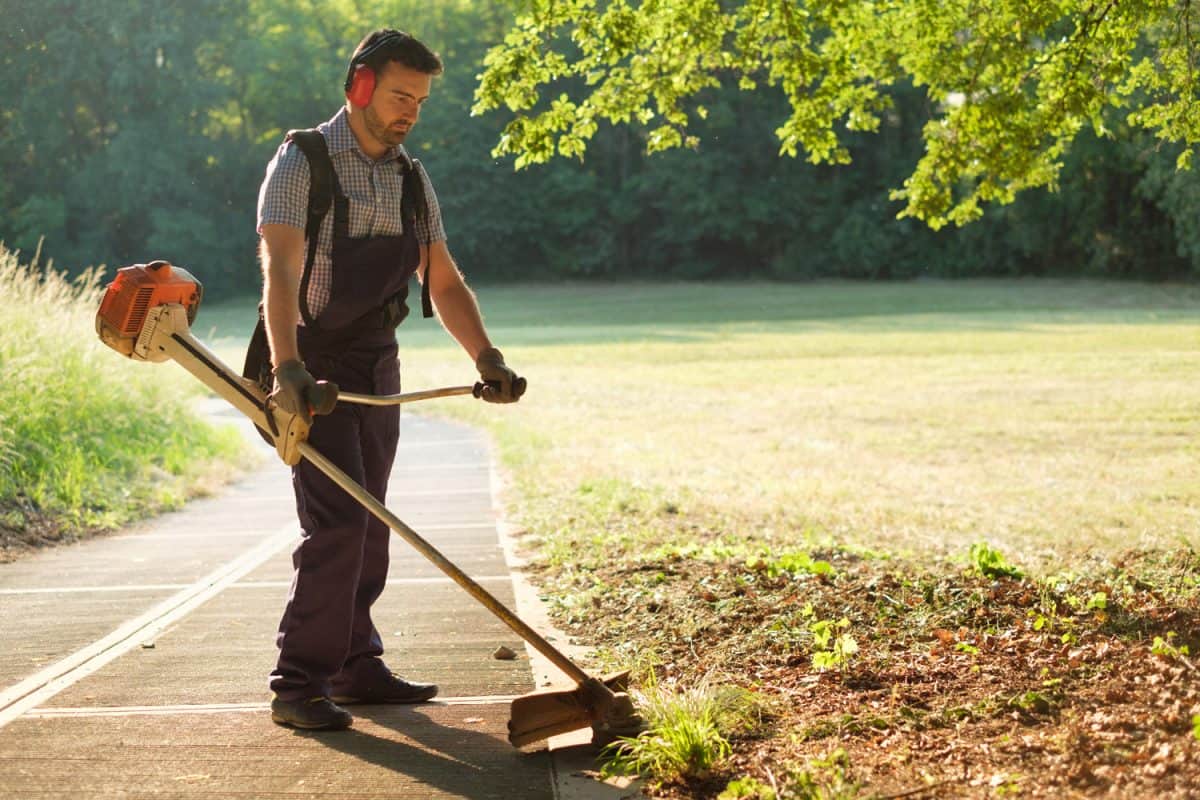
These types of lawn edgers use either electricity or petrol engines. Under this category are adaptable string trimmers and purpose-designed lawn edgers.
Adaptable string trimmers are built with their heads positioned vertically rather than horizontally so that they can be readily handled. Other string trimmers include specific lawn edging attachments, or the single head can be turned vertically to realign it.
While for longer grass edging lengths, purpose-designed edgers are available. And when you use this type of edger for long and even edges, it is more time-efficient.
Manually-Operated Lawn Edgers
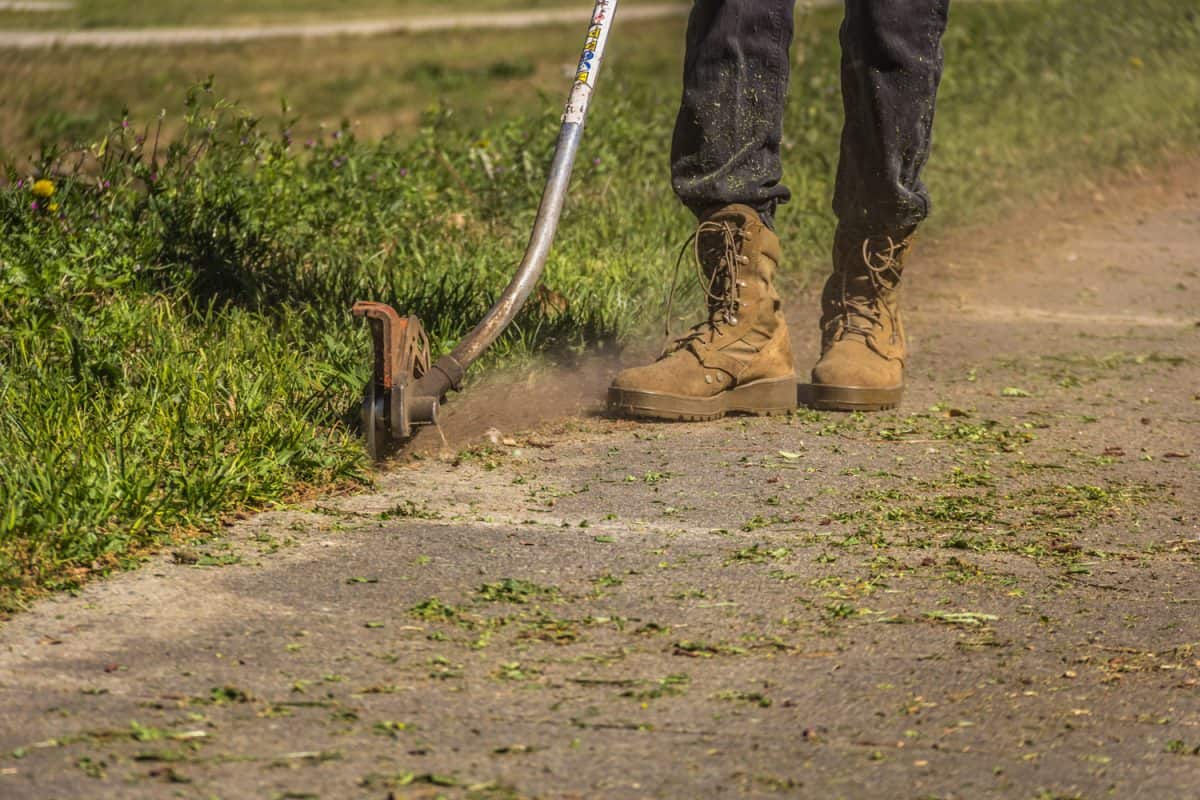
As the name suggests, manually-operated lawn edgers don't need electricity to function. Under this category are spade-based, roller-based, and hand shear lawn edgers.
The standard spade edgers, which use a vertical cutting blade, are the most basic lawn edger.
There are two types of roller-based manual lawn edgers: disc wheel and star wheel edgers. Both are powered by a roller wheel that is pushed along a hard surface near the lawn's edge.
Hand shears are also available in a variety of forms, ranging from single-handed operation at ground level to long-handled, some with adjustable length, two-handed operation, and right-angle shearing blade alignment for lateral cutting from a standing posture.
How To Make A Trench Between A Driveway And Lawn?
Before you start, you need these tools for this task:
- Broom rake
- Shop vacuum cleaner
- Tape measure
- Border spade
- Lawn edging with stakes
- Connector tubes
- Razor knife
- Rubber mallet
You can follow this simple guide to make a trench between the lawn and driveway:
- Using a rake or broom, scrape the gravel away from the edge of the driveway and sweep it into the center.
- Along the gravel edge and lawn, dig a 4-inch broad trench in the grass.
- Repeat along the full edge and 4 inches out from the initial cut line with a border spade inserted straight down in the earth where the lawn joins the gravel section.
- Install the edging on the Lawn. If you need more than one piece of lawn edging, connect the strips together.
- Secure the lawn edging by stakes to the ground.
- Backfill the trench with the soil that was previously removed. Compact the soil by walking over it many times and help keep the edging in place.
- Scatter the gravel back into place along the edging, keeping the gravel level at or below the edging's top.
What Are The Factors In Choosing Grass For Your Lawn?
When choosing what type of grass best fits your lawn, you must make sure that your choice of grass will:
- Grow in your local area and under specific site conditions (sun, shade, etc.)
- Best meet the needs of your entire family, including children, adults, and pets
- Withstand the planned use of the yard
With this, the first factor to consider is sunshine. Is there enough sunlight in the garden for shade-tolerant species to thrive? The second important factor to consider is whether the climate in your area favors cool-season or warm-season turf species. You'll also need to decide if you want to plant grass seed or install sod for a quick lawn.
Final Thoughts
Having your grass grow higher than your driveway can be advantageous, even if the soil should stay below the driveway.
Now you know more about leveling your driveway and lawn, the different types of edgings you can use for your lawn and how to install them, and more. You'll be ready to build the ideal front yard setup now that you know the ideal height between your lawn and driveway and the best barriers between them.
If you're thinking of installing edging for your paver driveway, be sure to read our article:
You can learn more to get your lawn and pavement in perfect shape in these articles:




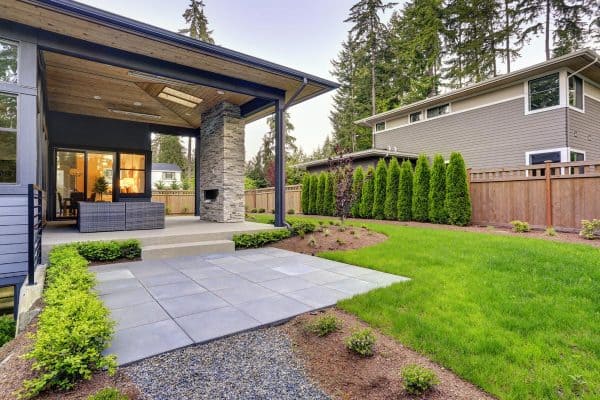
![Car on a parking lot which made from turf block, How Do Grass Pavers Work? [And Where To Use Them]](https://pavingplatform.com/wp-content/uploads/2022/03/Car-on-a-parking-lot-which-made-from-turf-block-600x400.jpg)
